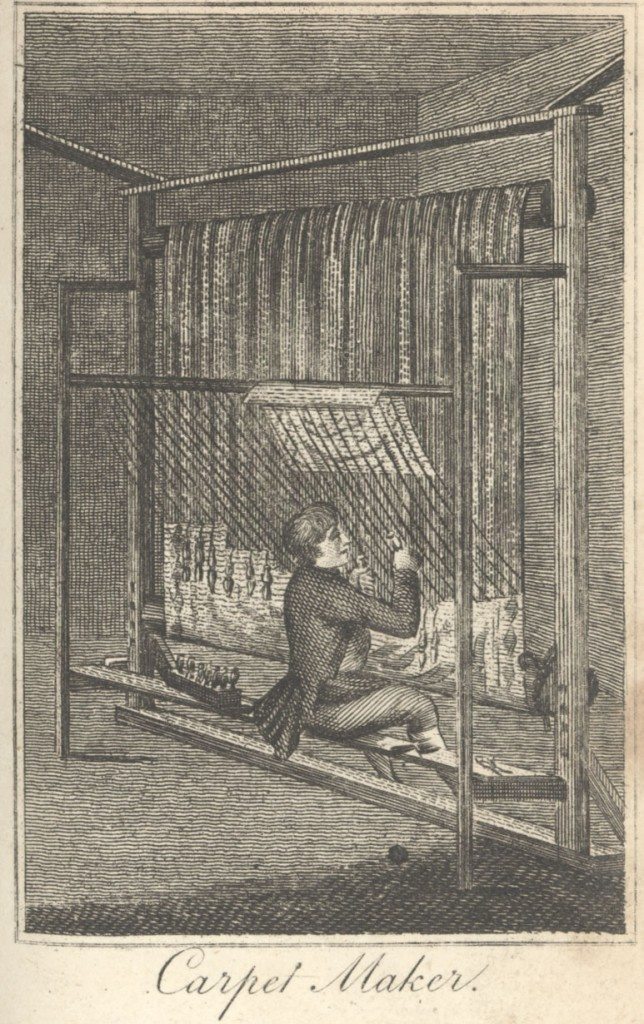Carpet Maker
The picture shows a carpet weaver at his loom. The loom consists of two long planks of wood and two thick rollers or beams. The planks stand upright and the rollers are placed across, one at the top and one at the bottom about a foot from the ground and can be turned as the carpet is made. Each roller has a series of grooves in which the ends of the warp are fastened so that all of the threads are kept perpendicular.
The carpet maker works from a pattern, which is divided into squares and each square is further divided into ten vertical lines, which correspond to groups of ten threads of the warp and ten horizontal lines which correspond to the thread the carpet maker works through the warp.
Carpets were produced at Axminster, Wilton, Kidderminster and Leeds and many other places.
Source: The Book of Trades or Library of the Useful Arts, 1806
Donated by: Birmingham Central Library, Science and Technology






